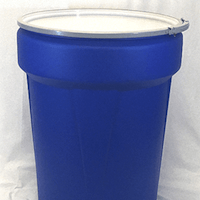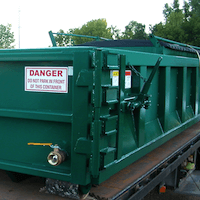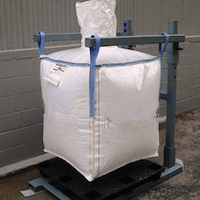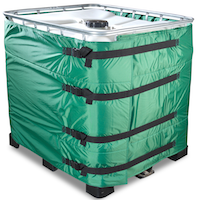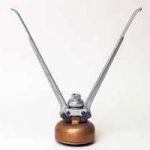
Dewatering Sediment Bags |Solutions News | Vol 6
For effectively containing sediment pumped out during dewatering operations. Draining swampy or low-lying areas is a common occurrence in construction. Unfortunately, pumping out the water from these areas also removes a lot of dirt, silt, mud and debris along with the water. These contaminants can cause problems if they are simply discharged into a storm drain.
Our Dewatering Sediment Bags provide an economical and effective solution. By pumping water into the bag, contaminants are trapped and filtered so only water escapes to the ground below or nearby storm drains.
Key Features:
- Detains both oil and sediment, offering a combination of benefits not available in alternative dewatering bags.
- Wide range of standard and custom sizes available. As well as Reusable Model.
- Helps comply with NPDES, 40 CFR 122.26 (1999) and TMDL requirements
For Work Site Dewatering
Several factors impact bag size and bag type:
- Flow rate of your pump.
- Type and particle size of the sediment.
- Trial and error is the standard method for determining size and type.
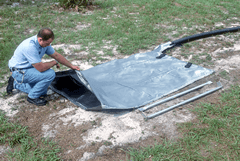
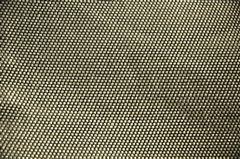
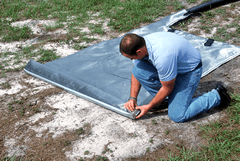
Images (left to right):Open end – reusable dewatering bag. Example of Bag Material and end closure of reusable bag.
Placement of dewatering filtration bags
- Place the dewatering bag on a relatively flat surface or in a dump truck or similar containment vehicle.
- Sloped surfaces are not recommended as the bag may roll.
- To improve the performance of dewatering bags, consider placing them on a porous surface such as hay bales or aggregate.
- Make sure to choose a material that will not damage the bags.
Attach Discharge Hose

Standard Sediment Dewatering Bags
Filter/Sediment Bags are closed bags designed to handle a discharge hose from 2 to 4 inches in size.
- Use a utility knife to cut a slit in the bag
- Insert and connect the hose and secure with a clamp, ties or tape.
Water Runoff Guidelines
- Guide water runoff to the nearest stream, pond or inlet.
- Avoid causing any erosion.
Monitor Use
- Filter/Sediment Bags are rugged, but not indestructible.
- Monitor pump rate and sediment concentration to avoid bag failure.
Options include:
- Filter bag can be buried in place.
- Filter bag can be taken full to the proper landfill
- Filter bag can be cut open and the sediment removed and disposed of properly.
Storage
Ensure bags are adequately protected from:
- Moisture
- Ultraviolet radiation
- Chemicals that are strong acids or bases
- Temperatures in excess of 140oF
- Animal destruction
This material is presented for general information only. Always verify the suitability for a specific application with the project engineer. Where contradictions occur, follow the instructions of the project engineer. There is no implied or expressed warranty regarding the installation procedures or the geosynthetic products in this guide. Installation procedure and product choice is the sole responsibility of the contractor and contractor assumes all liability.

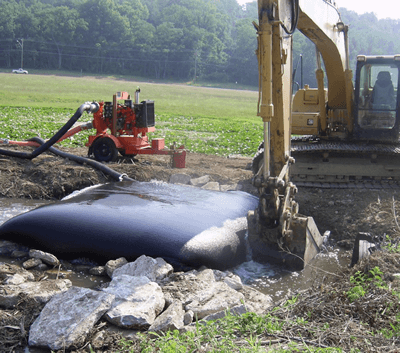

 P.O. Box 8149
P.O. Box 8149